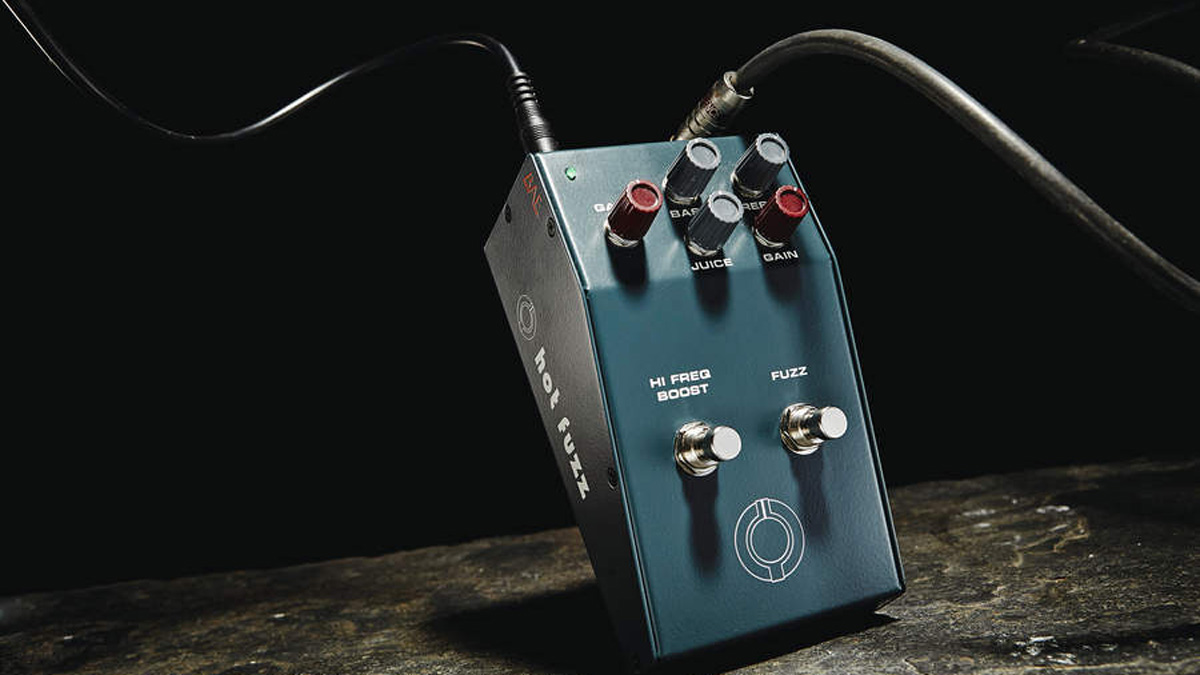MusicRadar Verdict
A sublime combination of fuzz and treble boost.
Pros
- +
Two cool effects in one pedal.
- +
Rock solid build quality.
Cons
- -
Inputs and outputs reverse convention.
- -
Large pedalboard footprint.
MusicRadar's got your back
Unlike its namesake comedy crime movie, there’s no mystery to be solved with this Hot Fuzz: it’s a fuzzbox, pure and simple, albeit one that also sports an independent high frequency boost.
BAE is a California- based manufacturer of, primarily, high-quality microphone preamps/EQs based on classic vintage designs like the British Neve 1073.
The Hot Fuzz is the company’s very first stompbox and there’s some vintage Brit influence going on here too: the high frequency boost is in the Rangemaster vein of treble boosters while the 4-transistor fuzz, said by BAE to be an ‘English 1970s style fuzz box’, has Tonebender DNA.
Sounds
Juxtaposition of the Juice knob (fuzz) with Gain (output volume) offers quite a range, from gritty drive to full-range vintage fuzz with nowt taken out, all very responsive to guitar volume.
The Bass and Treble knobs are powerful here, working in tandem to shape the character to suit your exact needs, but if you want the pedal to live up to its name, stomp on the Boost switch to turn up the heat.
Used by itself, besides rolling off some low end, its main thrust is a snarky presence with plenty in the tank to drive amps harder, it excited just the right frequencies to make our darker-sounding vintage non-top boost AC30 come alive.
Added to the fuzz it offers a real enrichment, bringing out the singing harmonics, and when you want to switch in Boost and Fuzz together, the two footswitches are close enough to allow it with one clout of your boot, yet far apart enough to make individual operation of them easy, too.
Want all the hottest music and gear news, reviews, deals, features and more, direct to your inbox? Sign up here.
Sound-wise, we can’t fault this, but there is one minor issue and it’s something that we’ve seen before in the first pedals from companies that haven’t made pedals before: while it’s not set in stone that the input goes on the right and output on the left, it is common practice and this one gets the other way around.
The pound’s dismal exchange rate means that you are paying more these days for quality imported gear, but here you are getting a sublime combination of fuzz and treble boost for your money.
Trevor Curwen has played guitar for several decades – he's also mimed it on the UK's Top of the Pops. Much of his working life, though, has been spent behind the mixing desk, during which time he has built up a solid collection of the guitars, amps and pedals needed to cover just about any studio session. He writes pedal reviews for Guitarist and has contributed to Total Guitar, MusicRadar and Future Music among others.

